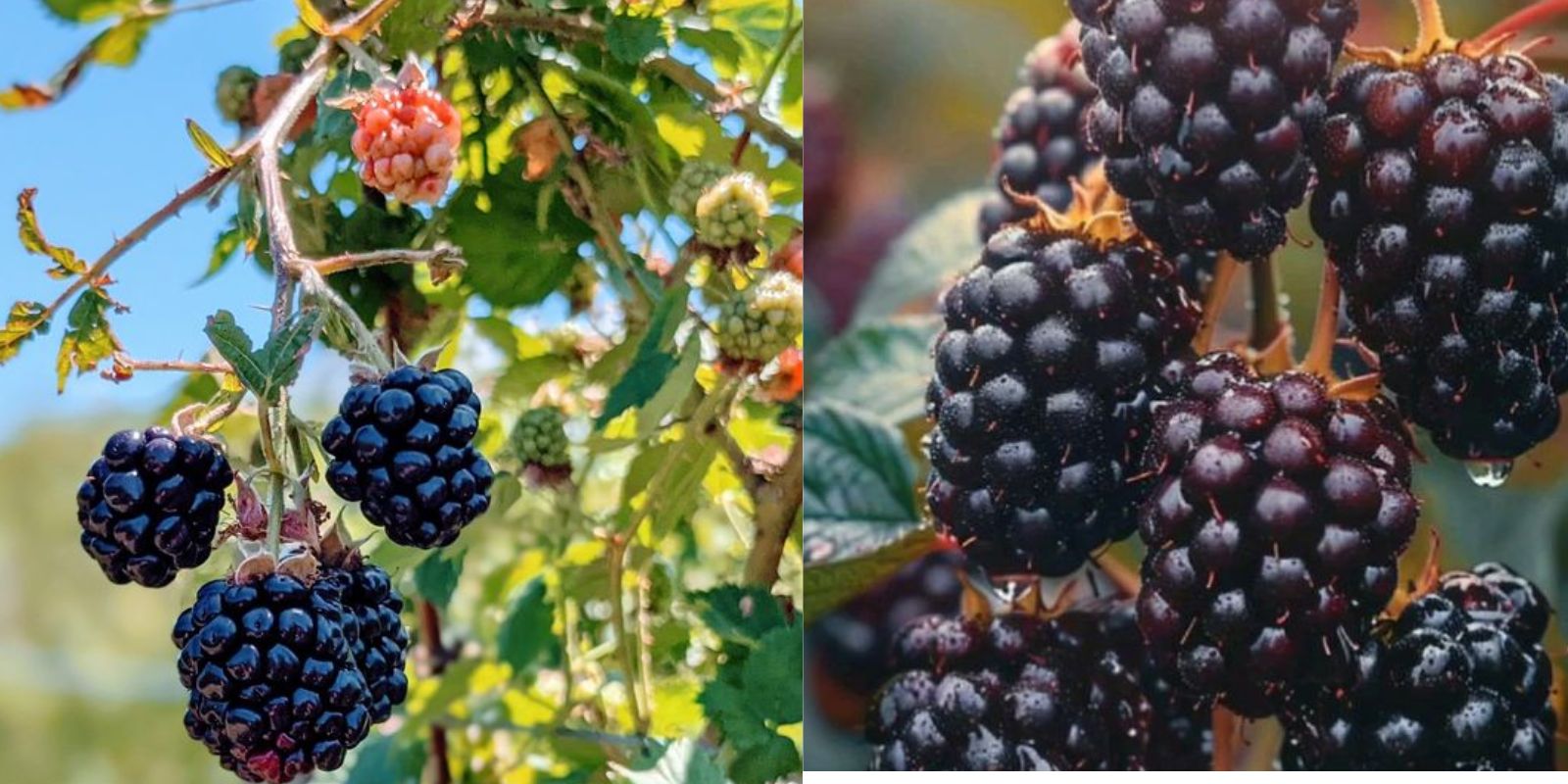Introduction
Blackberries are a popular fruit known for their sweet, juicy flavor and numerous health benefits. As consumer demand for fresh blackberries grows, farmers are increasingly adopting advanced cultivation and harvesting techniques to produce millions of pounds of this delicious berry. In 2023, modern technology and refined agricultural practices are transforming blackberry farming, making large-scale production more efficient and sustainable. This article explores the key steps in blackberry farming, from soil preparation to harvesting, and highlights how technology enhances each phase of the process.
Selecting the Right Varieties
Choosing the right blackberry varieties is crucial for successful large-scale farming.
- Variety Selection: Farmers should select varieties that are high-yielding, disease-resistant, and suited to their local climate. Popular varieties include ‘Navaho,’ ‘Ouachita,’ and ‘Triple Crown,’ which are known for their robust growth and fruit quality.
- Disease Resistance: Opt for varieties resistant to common blackberry diseases such as rust and anthracnose. Disease-resistant varieties reduce the need for chemical treatments and contribute to higher, more consistent yields.
Soil Preparation
Proper soil preparation is essential for healthy blackberry plants and high yields.
- Soil Testing: Begin with a soil test to determine pH levels and nutrient content. Blackberries prefer a slightly acidic soil with a pH of 5.5 to 6.5. Based on the soil test results, amend the soil with lime or sulfur to achieve the ideal pH.
- Soil Amendment: Improve soil structure and fertility by incorporating organic matter such as compost or well-rotted manure. This enhances soil drainage, aeration, and nutrient availability.
- Raised Beds or Rows: Consider planting blackberries in raised beds or rows to improve drainage and reduce the risk of root rot. Raised beds also make it easier to manage soil moisture and temperature.
Planting
Effective planting techniques set the stage for a successful blackberry crop.
- Spacing: Space blackberry plants adequately to allow for growth and air circulation. Typically, plants are spaced 3-4 feet apart within rows, and rows are spaced 8-10 feet apart. This spacing helps prevent overcrowding and allows for easy access during maintenance and harvesting.
- Planting Depth: Ensure that plants are set at the same depth they were grown in the nursery. Planting too deep can hinder root development, while planting too shallow can expose roots to environmental stress.
- Precision Planting: Use precision planting techniques to ensure even spacing and proper depth. Automated planting equipment can help achieve consistent results across large areas.
Irrigation
Consistent moisture is critical for blackberry plants to thrive and produce high-quality fruit.
- Irrigation Systems: Implement efficient irrigation systems, such as drip irrigation or soaker hoses, to deliver water directly to the root zone. Drip irrigation minimizes water waste and reduces the risk of foliar diseases.
- Water Management: Monitor soil moisture levels regularly and adjust irrigation schedules based on weather conditions and plant needs. Avoid over-watering, which can lead to root rot and other issues.
Fertilization
Proper fertilization supports healthy plant growth and fruit production.
- Nutrient Management: Apply balanced fertilizers that provide essential nutrients, including nitrogen, phosphorus, and potassium. Use soil test results to guide fertilizer application and avoid over-fertilization, which can lead to excessive foliage growth at the expense of fruit development.
- Organic Amendments: Incorporate organic amendments such as compost or well-rotted manure to improve soil fertility and structure. Organic amendments also help maintain soil moisture and support beneficial microbial activity.
Pest and Disease Management
Effective pest and disease management is crucial for maintaining plant health and maximizing yields.
- Pest Monitoring: Regularly monitor plants for common pests such as aphids, spider mites, and beetles. Use traps and scouting techniques to detect pest populations early and implement control measures as needed.
- Integrated Pest Management (IPM): Employ IPM practices, including biological control methods and cultural practices, to manage pests and diseases. For example, introducing beneficial insects like ladybugs can help control aphid populations naturally.
- Disease Control: Implement disease management strategies such as crop rotation, proper pruning, and using disease-resistant varieties. Apply fungicides or bactericides only when necessary and follow IPM guidelines to minimize environmental impact.
Harvesting
Harvesting blackberries efficiently is key to achieving high yields and maintaining fruit quality.
- Automated Harvesters: Modern farms use automated harvesting machines to pick blackberries quickly and efficiently. These machines are equipped with sensors and cutting blades that ensure the spears are harvested at the peak of ripeness.
- Harvest Timing: Harvest blackberries when they are fully ripe and have a deep, dark color. Ripe berries are sweet and tender, while underripe berries can be tart and less flavorful.
- Post-Harvest Handling: Immediately after harvesting, sort and package blackberries to prevent damage and ensure quality. Use cooling techniques such as hydrocooling or forced-air cooling to preserve freshness and extend shelf life.
Technological Innovations in Blackberry Farming
Technological advancements are transforming blackberry farming and improving efficiency.
- Data Analytics: Farmers use data analytics to monitor crop health, predict yields, and optimize resource use. Sensors and drones collect data on soil moisture, temperature, and plant growth, which is analyzed to make informed decisions.
- Precision Agriculture: Precision agriculture technologies, such as GPS-guided machinery and variable-rate application systems, enable farmers to apply inputs more efficiently and reduce waste.
- Sustainable Practices: Advances in sustainable farming practices, such as reduced tillage and integrated pest management, contribute to environmentally friendly blackberry production.
Conclusion
Farming millions of pounds of blackberries involves a combination of advanced techniques and technologies. From selecting the right varieties and preparing the soil to implementing efficient irrigation and harvesting methods, each step is crucial for achieving high yields and maintaining quality. As technology continues to advance, the future of blackberry farming looks promising, with further improvements in productivity, sustainability, and resource management.
Motivation
Excited to explore how modern techniques are revolutionizing blackberry farming? Dive into these practices and see how technology can help you achieve impressive yields and quality. Share your experiences and let’s continue to grow and innovate together!

